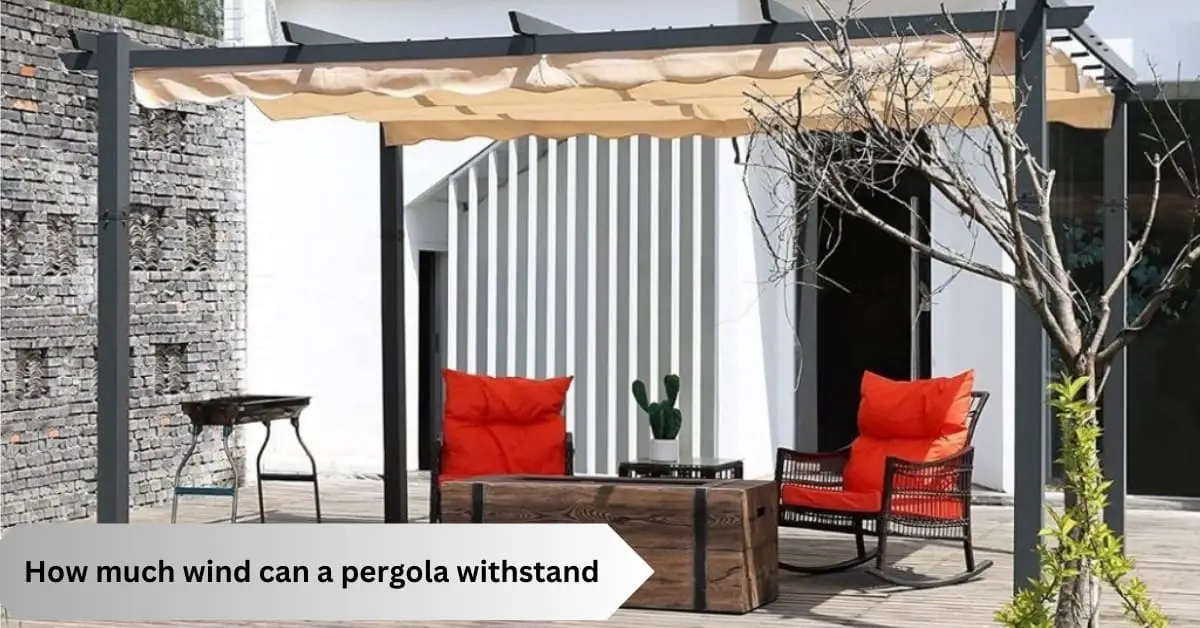Pergolas are a beautiful and functional addition to any outdoor space. They provide shade and aesthetic appeal, making them a popular choice for homeowners. However, with their open design, pergolas are vulnerable to wind damage.
It’s important to understand how much wind a pergola can withstand to ensure its safety and longevity.
Factors such as the pergola’s design and construction, the materials used, and the geographical location and climate can all affect its wind tolerance.
Additionally, it’s important to consider the wind rating of a pergola and choose one with an appropriate rating for the location.
While enhancing a pergola’s wind tolerance is possible by strengthening its structure and adding wind-blocking features, it’s important to have a basic understanding of wind tolerance and the various factors that can impact it.
This guide will explore how much wind a pergola can withstand and what steps can be taken to ensure its safety during windy conditions.
How much wind can a pergola withstand: A pergola’s wind resistance depends on its design, material quality, and installation. Well-constructed ones can withstand moderate winds, but it’s best to consult a professional for specific wind load calculations.
How much wind a pergola can withstand?
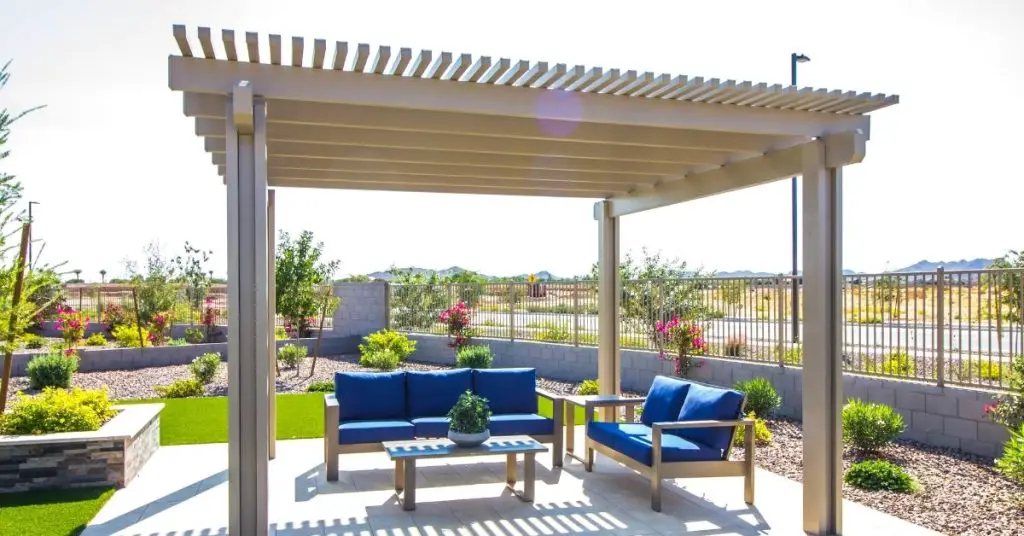
The amount of wind a pergola can withstand varies depending on its wind rating. Wind ratings for pergolas typically range from around 70-100 miles per hour, indicating the maximum wind speed that the structure can withstand without sustaining damage.
However, it’s important to note that other factors, such as the climate and location of the installation site, the prevailing winds, and the installation method, can also affect a pergola’s wind resistance.
Consulting with a professional contractor or supplier can help determine the appropriate wind rating and installation method for your pergola needs.
Understanding Pergolas
Pergolas are popular outdoor structure that adds beauty and functionality to any home or garden.
They are typically made of wooden or metal beams and posts, with an open roof of crossbeams or latticework.
Pergolas can be used to create shade, privacy, and aesthetic appeal to any outdoor living space, and they are available in a variety of designs and sizes to fit different needs and preferences.
This guide will provide basic information about pergolas, the types of pergolas available, and the benefits of having a pergola.
Basic Information about Pergolas
Pergolas have been around for centuries, their origins tracing back to ancient Egypt and Rome. They were traditionally used as garden structures to support climbing plants and provide shade during the hot summer.
Today, pergolas have evolved into versatile outdoor structures that serve many purposes.
Pergolas are typically freestanding structures, although they can also be attached to a house or other building. They are typically rectangular or square, with four posts or columns supporting the roof structure.
The roof of a pergola is usually open, allowing for natural light and air to flow through. However, some pergolas may feature a retractable canopy or shade cloth that can be opened and closed as needed.
Pergolas can be made from various materials, including wood, metal, and vinyl. Wood is the most popular material for pergolas due to its natural beauty and durability.
Cedar, redwood, and pressure-treated pine are common types of wood used for pergolas.
Metal pergolas are also available, with aluminum and steel being the most popular options. Vinyl pergolas are a low-maintenance option that can mimic the look of wood without requiring as much upkeep.
Types of Pergolas
Several types of pergolas are available, each with its unique design and features. Here are some of the most common types of pergolas:
Classic Pergolas
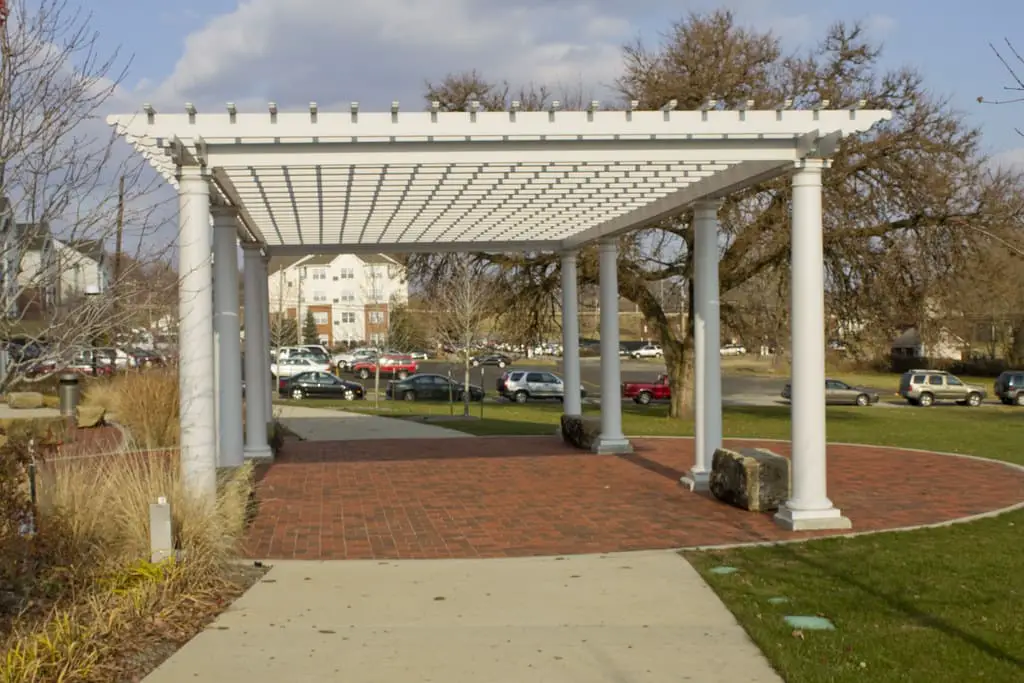
Classic pergolas are the most common type of pergola and feature a simple design with four posts supporting an open roof structure.
They are typically rectangular or square and are often used as a garden or patio structure.
Arched Pergolas

Arched pergolas feature a curved or arched roof, adding elegance and sophistication to the structure.
They are often focal points in a garden or outdoor living space.
Attached Pergolas
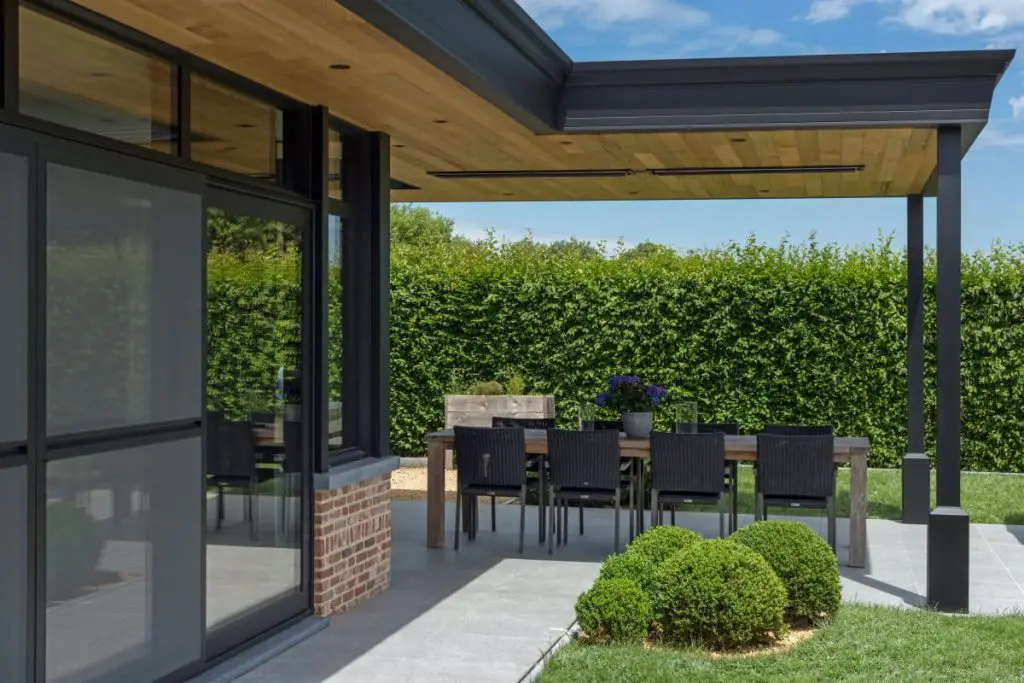
Attached pergolas are attached to the side of a house or other building, providing a seamless transition between indoor and outdoor living spaces.
They can be designed to match the style of the house and can provide additional shade and protection from the elements.
Freestanding Pergolas

Freestanding pergolas are not attached to any structure and can be placed anywhere in a yard or garden.
They are often used as a standalone structure to provide shade and privacy in an outdoor living space.
Benefits of Having a Pergola
There are many benefits to having a pergola in your outdoor living space. Here are some of the most common benefits:
Provides Shade
Pergolas provide shade and protection from the sun’s harmful UV rays, making them an ideal structure for outdoor living spaces.
They can be designed to provide partial or complete shade, depending on your needs and preferences.
Enhances Aesthetic Appeal:
Pergolas can enhance the aesthetic appeal of any outdoor living space. They come in a variety of styles and designs, making it easy to find one that matches the style of your home and garden.
Adds Value to Your Home:
A well-designed and well-maintained pergola can add value to your home. It can be a selling point for potential buyers and can increase
Factors Affecting Pergola Wind Tolerance
Pergolas are outdoor structures that provide a shaded area for relaxation, entertainment, or decoration.
However, their wind tolerance can be affected by several factors, including the design and construction of the pergola, the material used in building it, and the geographical location and climate where it is installed.
Design and construction of the pergola
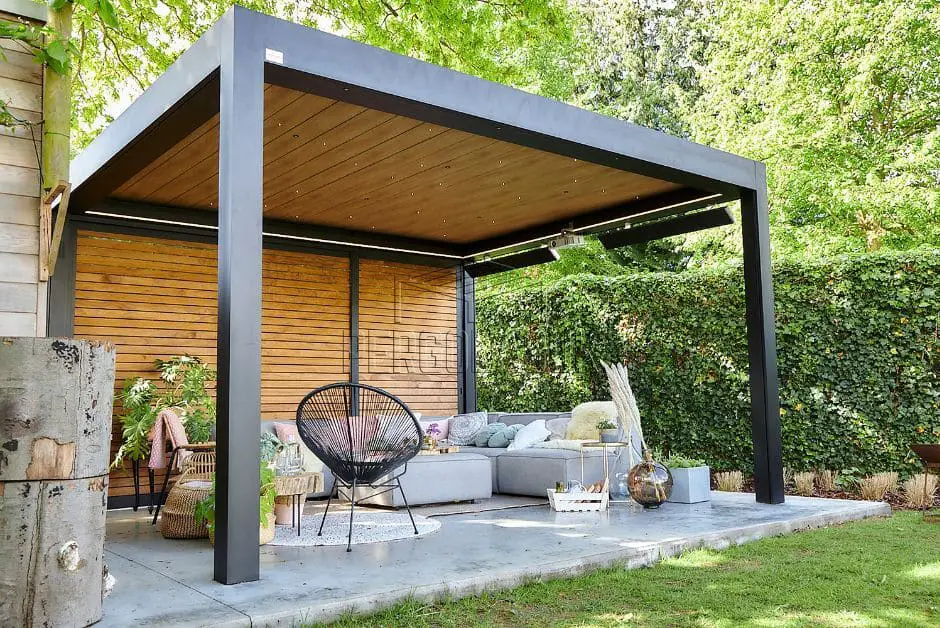
The design and construction of the pergola are crucial in determining its wind resistance. A pergola with a sturdy, anchored framework can withstand strong winds.
The framework of a pergola consists of vertical posts and horizontal crossbeams that support the roof structure.
The posts should be anchored deeply into the ground or secured to a concrete base to provide stability against high winds.
In addition, the spacing and size of the crossbeams and roof structure can affect the wind resistance of the pergola. The closer the crossbeams are spaced, the more stable the structure becomes.
The size and shape of the roof structure also play a significant role in its wind resistance. A pitched roof can withstand higher wind speeds than a flat roof.
The connection between the crossbeams and the posts is also important in the pergola’s wind resistance.
The joints should be tightly connected and reinforced with brackets or metal plates to prevent any movement during high winds. Additionally, diagonal bracing can provide extra stability to the structure.
The material used in building the pergola
The type of material used in building the pergola also affects its wind tolerance. The two most common materials used in building pergolas are wood and metal. Wood is a traditional and popular choice for pergolas, but it may not be the best choice for areas with high winds.
Metal pergolas are more durable and weather-resistant than wood. They are particularly suited to areas with high wind speeds or harsh weather conditions.
Metal pergolas can be made of various metals, including steel, aluminum, and wrought iron.
Steel and wrought iron are the most robust, durable, and heaviest materials.
Aluminum is a lighter option that is more resistant to rust and corrosion than steel or wrought iron.
Geographical location and climate
The geographical location and climate of the area where the pergola is installed play a significant role in determining its wind tolerance.
Areas with high wind speeds, such as coastal regions, require pergolas with greater wind resistance.
In such areas, the design and construction of the pergola should consider the wind direction and speed.
The area’s climate can also impact the wind resistance of the pergola. Regions with harsh weather conditions, such as heavy rainfall, snowfall, or extreme temperatures, may require additional support to withstand the weight of the snow or protect against extreme weather.
Wind Ratings for Pergolas

Pergolas are outdoor structures designed to provide shade and aesthetic appeal to gardens, decks, and patios. However, pergolas can be vulnerable to wind damage due to their open design.
To address this, manufacturers use a wind rating system to indicate the wind resistance of their products.
Explanation of Wind Rating System
The wind rating system assigns a numerical value to indicate the maximum wind speed that a pergola can withstand without sustaining damage.
The system considers several factors, such as the design of the pergola, the materials used, and the installation method.
The American Society of Civil Engineers (ASCE) has established guidelines for wind load calculations that manufacturers use to determine the wind rating for their products.
These guidelines consider the wind speed, the site’s exposure, the structure’s size and shape, the height above ground, and the type and quality of the materials used.
The wind rating system uses the Beaufort Scale to classify wind speeds. The Beaufort Scale is a system that categorizes wind speeds from 0 (calm) to 12 (hurricane force) based on their effects on land and sea.
The following table shows the Beaufort Scale classifications and their corresponding wind speeds:
Beaufort Scale Wind Speed (mph)
0 (Calm) 0-1
1 (Light air) 1-3
2 (Light breeze) 4-7
3 (Gentle breeze) 8-12
4 (Moderate breeze) 13-18
5 (Fresh breeze) 19-24
6 (Strong breeze) 25-31
7 (High wind) 32-38
8 (Gale) 39-46
9 (Strong gale) 47-54
10 (Storm) 55-63
11. (Violent storm) 64-75
12. (Hurricane force) >75
Different Wind Ratings for Pergolas
Different manufacturers offer wind ratings for their pergolas, typically around 70-100 miles per hour.
The wind rating depends on several factors, such as the design of the pergola, the materials used, and the installation method.
Some manufacturers use their wind rating system instead of the ASCE guidelines. This can make it challenging to compare the wind ratings of different pergolas from different manufacturers.
However, most manufacturers will provide information about their wind rating system, so consumers can compare the wind resistance of different pergolas.
How to Choose a Pergola with the Appropriate Wind Rating
Choosing a pergola with the appropriate wind rating depends on several factors, such as the climate and location of the installation site, the prevailing winds, and the intended use of the pergola.
Climate and Location of Installation Site
The wind rating of a pergola should be suitable for the climate and location of the installation site. For example, suppose the site is in a region that experiences frequent storms or hurricanes. In that case, a pergola with a higher wind rating may be necessary to ensure its longevity and safety.
Conversely, a pergola with a lower wind rating may suffice if the site is relatively calm.
Prevailing Winds
The prevailing winds in the area should also be considered when choosing a pergola with the appropriate wind rating.
If the prevailing winds are strong and frequent, a pergola with a higher wind rating may be necessary to ensure that it can withstand the wind load.
A professional contractor or supplier can help you determine the wind load and the appropriate wind rating for your pergola based on the prevailing winds.
Intended Use of the Pergola
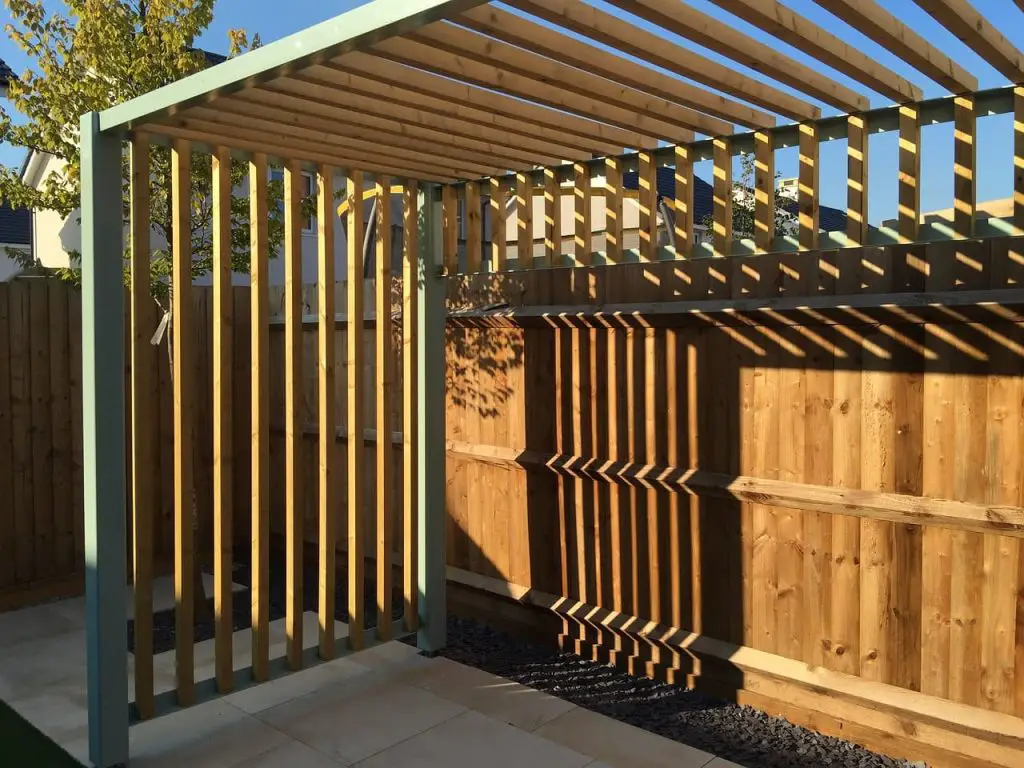
The pergola’s intended use should also be considered when choosing one with the appropriate wind rating.
If you plan to use your pergola as a permanent outdoor living space or dining area, a higher wind rating may be necessary to ensure its durability and safety.
A lower wind rating may be sufficient if you only plan to use your pergola occasionally or for seasonal purposes.
Installation Method
The installation method of the pergola can also affect its wind resistance. Pergolas anchored to a solid foundation, such as a concrete slab or footings, tend to be more wind-resistant than those secured to a wooden deck or patio.
Additionally, the installation method should comply with local building codes and regulations to ensure the safety and stability of the structure.
Consulting with a Professional
When choosing a pergola with the appropriate wind rating, consulting with a professional contractor or supplier is recommended.
They can provide information about the wind resistance of different pergolas and help you select a pergola that suits your needs and environment.
They can also assist with the installation process to ensure the pergola is securely anchored and meets all local building codes and regulations.
Enhancing Pergola Wind Tolerance
Pergolas are great outdoor structures that provide a shaded area for relaxation, entertainment, or decoration.
However, they can be vulnerable to strong winds, and enhancing their wind tolerance is essential to ensure their longevity and safety.
We will discuss additional measures that can be taken to improve the pergola’s wind tolerance, including strengthening the structure and adding wind-blocking features.
Strengthening Pergola’s Structure
The first step in enhancing the pergola’s wind tolerance is to ensure its structure is robust and sturdy.
This can be achieved by reinforcing the pergola’s framework with additional support, such as diagonal braces or concrete footings.
Diagonal braces can be installed between the posts and crossbeams to increase the rigidity of the structure and prevent it from swaying during high winds.
Concrete footings can anchor the pergola’s posts more securely to the ground. They are particularly useful in soft or sandy soil areas that cannot provide adequate support.
Concrete footings should be installed at least 4 feet deep and 8 inches wide to ensure maximum stability.
Another way to strengthen the pergola’s structure is to use thicker and stronger materials, such as steel or heavy-duty wood.
Steel is an excellent option for areas with high wind speeds, as it is more durable and resistant to bending or warping than wood.
Heavy-duty wood, such as cedar or redwood, is also a great option, as it is strong and resistant to rot and decay.
Adding Wind-Blocking Features
In addition to strengthening the pergola’s structure, adding wind-blocking features can also improve its wind tolerance. Here are some wind-blocking features that can be added to the pergola:
Curtains or Screens
Adding curtains or screens to the sides of the pergola can help block the wind and provide privacy. Curtains or screens of heavy-duty fabric or vinyl can be attached to the pergola’s posts or crossbeams with hooks or snaps.
They can be easily opened or closed depending on the weather conditions.
Solid Roof or Canopy
A solid roof or canopy can provide additional protection against strong winds. A pitched roof is more effective than a flat roof in diverting the wind and preventing it from lifting the roof.
A canopy made of heavy-duty fabric or polycarbonate sheets can also be installed on top of the pergola to provide shade and protection.
Windbreakers
Windbreakers are panels or walls installed around the pergola to block the wind. They can be made of various materials, such as tempered glass, polycarbonate sheets, or metal panels.
Windbreakers can be attached to the pergola’s posts or crossbeams or installed as a separate structure around the pergola.
Plants or Trees
Planting trees or tall shrubs around the pergola can help block the wind and provide additional shade and privacy.
Trees such as evergreens or deciduous trees with dense foliage can block the wind and add a natural aesthetic to the pergola.
How much wind can a pergola withstand?
Usually, a wooden pergola can endure winds ranging from 50 to 70 mph. On the other hand, fiberglass pergolas are renowned for their exceptional strength and durability, capable of withstanding high winds up to 130 miles per hour or even more, depending on the particular design and installation method.
FAQs
Q.1 What amount of wind can a pergola endure?
The wind tolerance of a pergola depends on various factors, such as its design and construction, the material used, and the location’s climate. Generally, a well-built and sturdy pergola can withstand winds up to 50-60 mph. However, this can vary depending on the specific conditions and the pergola’s location.
Q.2 Can I make my pergola more wind-resistant?
You can enhance the pergola’s wind tolerance by strengthening its structure and adding wind-blocking features like curtains, screens, or windbreakers.
Q.3 How do I strengthen my pergola’s structure?
You can reinforce the pergola’s framework with additional support, such as diagonal braces or concrete footings. Using thicker and stronger materials, such as steel or heavy-duty wood, can also improve the pergola’s wind tolerance.
Q.4 What wind-blocking features can I add to my pergola?
You can add curtains or screens to the sides of the pergola, install a solid roof or canopy, add windbreakers, or plant trees or tall shrubs around the pergola to block the wind.
Q.5 Can a pergola collapse in high winds?
A poorly built or structurally weak pergola can collapse in high winds. It’s essential to ensure that your pergola is built to withstand the local weather conditions and is reinforced with adequate support and sturdy materials.
Conclusion,
In conclusion, understanding how much wind a pergola can withstand is essential when building or installing one. Factors such as the design and construction, the material used, geographical location, and climate all affect a pergola’s wind tolerance.
Wind ratings for pergolas indicate the maximum wind speed that a structure can withstand without sustaining damage, typically ranging from 70-100 miles per hour.
When choosing a pergola with the appropriate wind rating, factors such as the climate and location of the installation site, the prevailing winds, the intended use of the pergola, and the installation method should be considered.
Enhancing a pergola’s wind tolerance can be achieved by strengthening the structure, adding wind-blocking features such as curtains or screens, a solid roof or canopy, windbreakers, or planting trees or plants.
Consulting with a professional contractor or supplier can ensure that a pergola is safely installed and meets all local building codes and regulations.
We hope this guide helped you learn about how much wind a pergola can handle. If you have any questions, please ask in the comments below.

